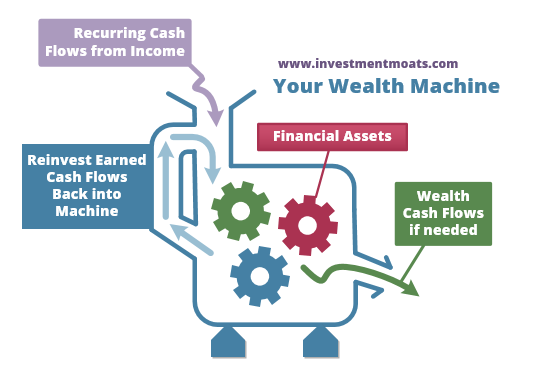Buffett’s Early Investments: A New Investigation into the Decades When Warren Buffett Earned His Best Returns. 2024. Brett Gardner. Harriman House.
I became aware of Warren Buffett in the early 1980s when a graduate school classmate encouraged me to read John Train’s The Money Masters. At the time, Buffett was unknown to the public and even to many in the business community. Some four decades later, perhaps more has been written about him than any other businessperson or investor. The writings include biographies by journalists, friends, and former employees. There have been books detailing his investment strategies and words of wisdom, as well as magazine and academic journal articles. The question is, what can Brett Gardner offer about Buffett’s investments that has not been written before?
Fortunately, Gardner, a value investor and analyst at Discerene Group, a private investment partnership, has taken a different path from the authors of other investment books. Rather than scour through Buffett’s shareholders’ letters at Berkshire Hathaway, he digs into Buffett’s early, pre-Berkshire investments. The result is a fresh look into the origins of Buffett’s investment approach.
We have previously read about Buffett’s transformation from a value investor who picked investments simply because they were cheap, “cigar butt” investing, to an investor who sought out great businesses at fair prices. Gardner takes us through this journey by examining 10 stocks from Buffett’s early investment years. Of the 10, only American Express and Disney are household names. Most others are likely little known to even the most devoted Buffett followers.
The book is divided into the Pre-Partnership Years and the Partnership Years, with each section highlighting five stocks. In attempting to provide a deeper understanding of Buffett’s methods, Gardner takes a unique approach to glimpsing into Buffett’s mind. Rather than simply looking for clues in his words, Gardner uses financial information available to Buffett when he made the investments.
Three criteria drove the author’s choice of the 10 investments he selected. First, could he obtain the relevant financial documents, such as Moody’s Industrial Manual and company annual reports? Second, he wanted to add value by not rehashing investments that had been widely written about. Finally, how interesting was the story behind the investment? Did its price embed misconceptions that he could correct?
Gardner begins with Buffett’s 1950 purchase of Marshall-Wells Company, North America’s largest hardware wholesaler. Going back in time, Gardner pulls information from Moody’s manuals and tries to discern the value in Marshall-Wells that Buffett might have perceived. Gardner asks, “Why did Buffett invest in the company?” In his early years as an investor, Buffett focused on Benjamin Graham’s philosophy of seeking cheap stocks.
Marshall-Wells’s valuation metrics, e.g., P/E and EV/EBIT, which are presented in the book, likely piqued Buffett’s interest in Marshall-Wells, and the fact that its hard assets offered downside protection and a margin of safety. Although the company would struggle and eventually be acquired, Gardner points out that investors who bought the stock at Buffett’s purchase price likely earned respectable returns.
As the author moves through the Pre-Partnership Years, we get a glimpse into the model that Buffett would follow in transforming Berkshire Hathaway from a New England textile firm into one of America’s largest conglomerates.
The lesson comes from Micky Newman, the son of Benjamin Graham’s partner Jerome Newman. The 1954 purchase of shares in Philadelphia and Reading Railroad (P&R) was the beginning of a model Buffett would follow of using cash from a moribund company to acquire profitable businesses. Newman, who later became P&R’s president, used the cash from liquidating inventories at P&R for such acquisitions. He preferred businesses where management would stay on to run the subsidiaries, a hallmark of Buffett’s acquisitions with Berkshire.
One of the more interesting investments is Buffett’s purchase of American Express shares in 1964. The chapter begins with an entertaining look at the famous Salad Oil Scandal, which provided an opportunity to purchase American Express at a compelling price. Although Gardner does not have much information about Buffett’s thinking, he attempts to piece together Buffett’s logic in acquiring American Express.
The biggest concern for investors was the salad oil liability. Going beyond simply purchasing the stock because it was cheap, Gardner points out, Buffett recognized the importance of American Express’s reputation. To determine if the scandal impacted American Express’s core businesses of Travelers Cheques and credit cards, he surveyed local restaurants to gauge credit card usage. Buffett even contacted American Express CEO Clark to praise him for honoring the subsidiary’s liabilities rather than using bankruptcy to divest the problem. This appears to be the beginning of Buffett’s evolution from a passive investor to an activist shareholder.
In Buffett’s Early Investments, Gardner dispels the myth that Buffett succeeded simply by sitting in a room with Moody’s Industrial Manuals. Buffett’s analysis went well beyond the financials. His purchase of Studebaker presents an example of his hands-on approach to investing. Studebaker, an automobile company successful enough to be included in the Dow in 1916, had fallen into hard times. In 1965, the company’s single-digit price-to-earnings ratio and tax-loss carryforward made the stock intriguing to Buffett.
At the time, Studebaker had 10 divisions, but Buffett and Sandy Gottesman, founder of First Manhattan, believed that the STP motor oil additive was the most important. To estimate the demand for STP, Buffett traveled to Kansas City to count railcars of STP. In another example of Buffett’s exhaustive leg work, he and Charlie Munger used family visits to Disneyland to evaluate the profitability of rides. The book is not just about Buffett’s successes but also looks at less successful ventures such as Cleveland Worsted Mills Co. and retailer Hochschild, Kohn & Co., which produced lessons that shaped Buffett’s investment philosophy.
Complementing his meticulous analysis, Gardner writes in a fluid and engaging style that makes Buffett’s Early Investments an enjoyable read, even for those who may not wish to delve deeply into Buffett’s strategies. His insights into companies like Disney make his historical overviews well worth the read.
Examining Buffett’s early investments allows us to see Buffett’s transformation from a passive value investor to an activist shareholder who could influence management to distribute cash or make other investor-friendly moves. Gardner concludes the book by summarizing the four factors — activism, concentration, a fluid and creative research process, and a discerning filter — that he views as the core of Buffett’s success.
Although activism may appear to be the purview of large, well-known shareholders, Buffett was relatively unknown to most in the business world when he contacted the CEO of American Express to support his handling of the Salad Oil Scandal. Buffett’s action provides a lesson that investors with modest positions may still be able to prod management into pursuing goals that can benefit all shareholders. Although not easy to apply, Gardner’s four factors of Buffett’s success represent actions likely to assist the pursuit of investment excellence.









